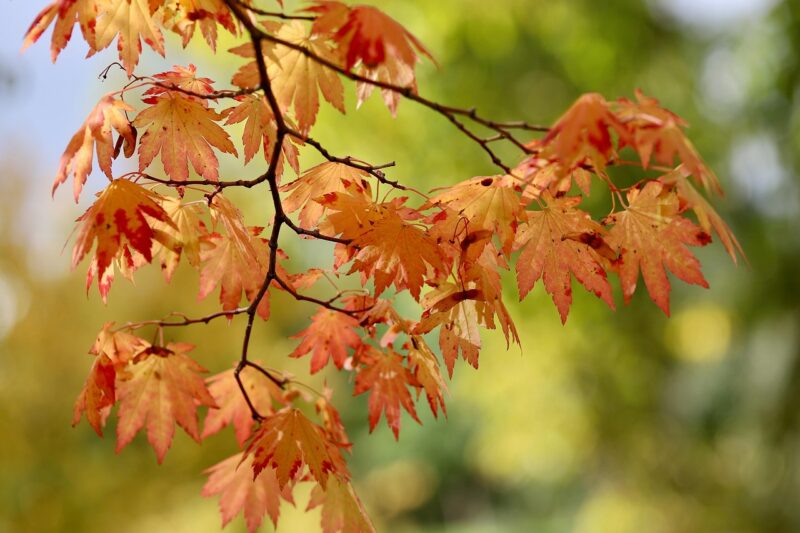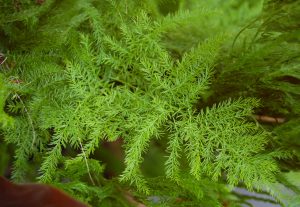In this guide, we’ll explore a selection of full sun Japanese maples, highlighting their unique attributes and discussing how to incorporate them into your outdoor spaces.
Bloodgood Japanese Maple
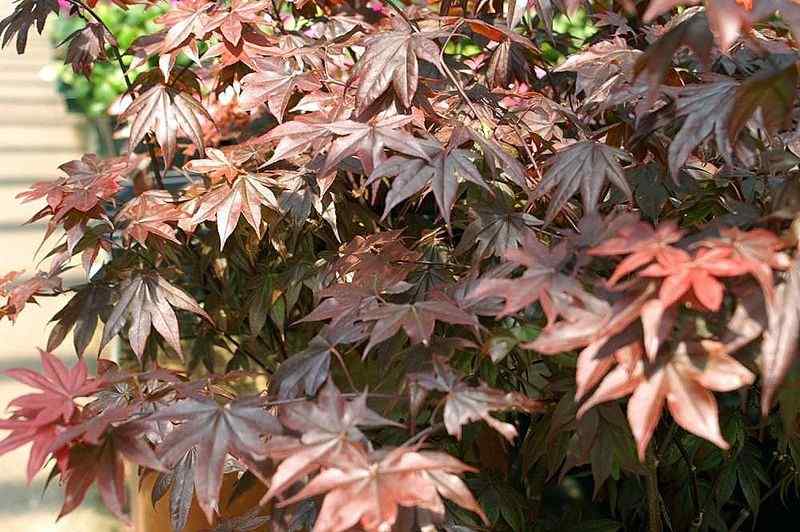
One of the most recognized varieties, the Bloodgood Japanese maple (Acer palmatum ‘Bloodgood’) is celebrated for its stunning deep red foliage. The leaves emerge purple-red in the spring, maturing to a deep crimson that retains its color throughout the growing season. This tree has a robust growth habit and can reach heights of 15 to 20 feet, with a similar spread, making it an excellent focal point in any garden or landscape design.
The Bloodgood is known for its resilience and can thrive in full sun, though it appreciates some afternoon shade, especially in hotter climates. Its elegant, broad canopy adds a dramatic flair to yardscapes, while the fine-textured leaves create a soft backdrop for larger plants. Furthermore, the tree’s bark is a rich reddish-brown, providing year-round interest.
To maximize the aesthetic appeal of a Bloodgood, consider planting it near a water feature or in a well-drained soil area where it can showcase its brilliant colors against rich greens. When planted in full sun, Bloodgood Japanese maples can become a centerpiece that dazzles from spring through fall.
Orangeola Japanese Maple
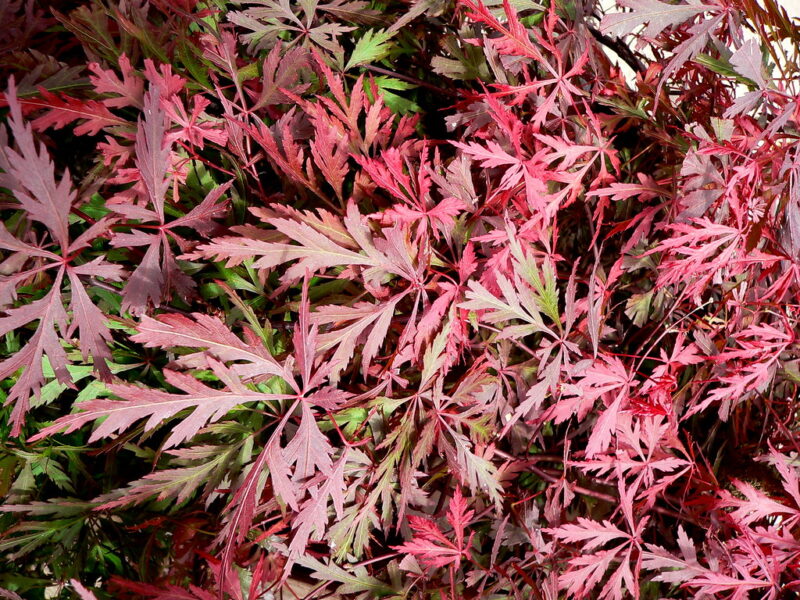
With its cascading, feathery foliage, the Orangeola Japanese maple (Acer palmatum ‘Orangeola’) offers a stunning contrast to traditional upright forms. This weeping variety features leaves that emerge as a vibrant orange-red in the spring and transition to a soft green with hints of gold during summer. In fall, the leaves turn to a fiery crimson, creating a breathtaking display that captures the essence of autumn.
The Orangeola typically grows to a height of 4 to 6 feet and can spread up to 7 feet wide. Its unique cascading habit makes it perfect for containers or as a specimen plant in a garden bed. While this maple can tolerate full sun, it thrives best with a bit of afternoon shade to protect its delicate leaves from scorching.
Planting an Orangeola near a pathway or low garden wall not only highlights its weeping form but also provides an enchanting view of its foliage from different angles. Given its compact size and vibrant colors, this maple is particularly well-suited for smaller gardens, where it can create a dramatic effect without overwhelming the space.
Emperor I Japanese Maple
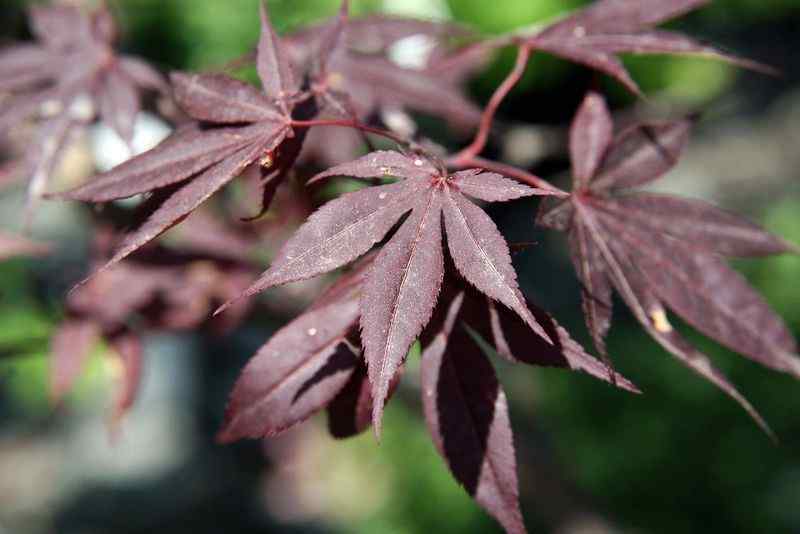
The Emperor I Japanese maple (Acer palmatum ‘Emperor I’) is a standout variety, known for its vigorous growth and resilience in full sun. This tree boasts a broad, upright habit and can reach heights of up to 15 feet with a similar spread. Its large, deeply lobed leaves emerge a vibrant green in spring, maturing to a glowing golden-orange hue in the fall.
One of the extraordinary features of the Emperor I is its ability to maintain color even in full sun, making it an ideal choice for homeowners looking to create a bright, vibrant landscape. The glossy leaves not only provide a striking visual but are also resistant to sunburn and scorch, a common concern with some other varieties.
Planted as a specimen tree or incorporated into a mixed border, the Emperor I offers a spectacular backdrop for perennials and shrubs. It’s a great choice for anyone wishing to achieve a more contemporary garden style, as its strong structure and color palette provide an excellent canvas for architectural designs in the landscape.
Inaba Shidare Japanese Maple
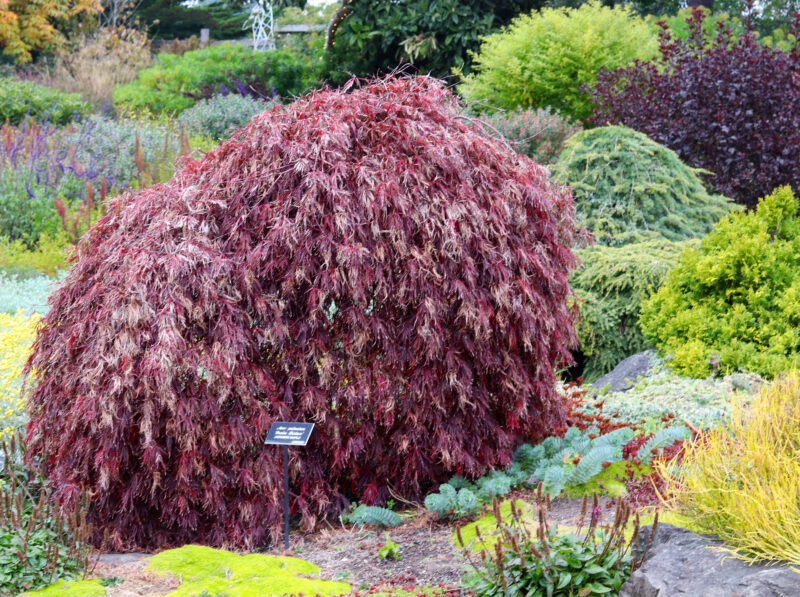
For those seeking a dramatic ground cover or cascading effect, the Inaba Shidare Japanese maple (Acer palmatum ‘Inaba Shidare’) is a perfect candidate. This weeping variety features finely dissected leaves that emerge a vibrant purple-red, softening to a lush green before transitioning to spectacular autumn hues of orange and crimson. The Inaba Shidare grows to about 4 to 6 feet in height and can spread out significantly, making it ideal for creating a layered effect in garden design.
In full sun, the Inaba Shidare will maintain its vibrant colors but will benefit from some afternoon shading to prevent leaf scorch. Its flowing branches can create a lovely draping effect, making it perfect for planting on slopes, alongside water features, or even cascading over rocks.
This particular variety is a showstopper in any landscape, offering versatility in design. Furthermore, its architectural form can beautifully contrast with more rigid structures, adding a sense of fluidity to garden design.
Crimson Queen Japanese Maple
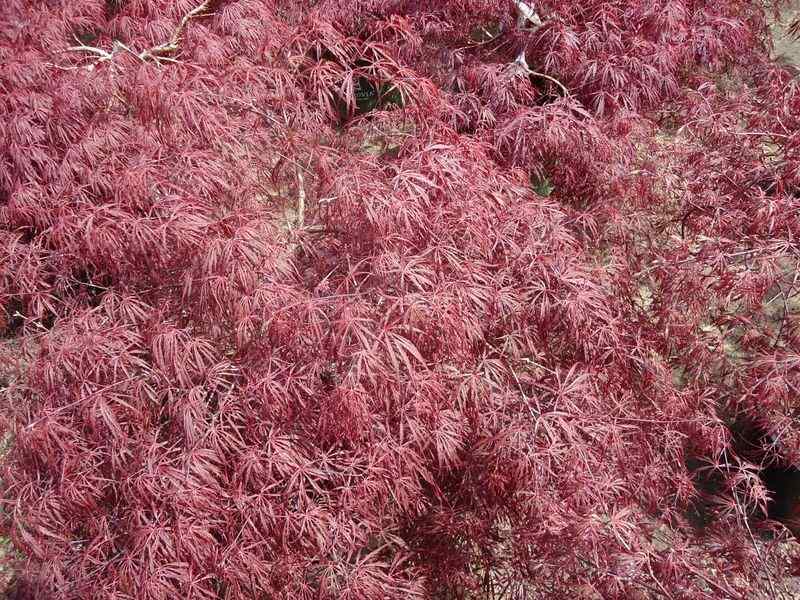
Another exquisite weeping variety, the Crimson Queen Japanese maple (Acer palmatum ‘Crimson Queen’) enchants gardeners with its rich coloration and sweeping branches. This tree features delicate, deeply lobed leaves that emerge in a striking red, transitioning to dark burgundy as the season progresses. Like the Inaba Shidare, Crimson Queen thrives in full sun but prefers to shield its leaves from harsh afternoon sunlight.
Reaching heights of approximately 5 to 8 feet with a similar spread, this maple works wonderfully in small gardens or as part of a larger landscape surround. Its elegant, cascading branches create a stunning visual effect, especially when lit by soft sunlight.
Integrating the Crimson Queen into your yard decor can add depth and contrast, especially when paired with evergreens or more upright plants. This variety’s whimsical appearance makes it a favorite for whimsical gardens, offering a stunning visual display through every season.
Tamukeyama Japanese Maple
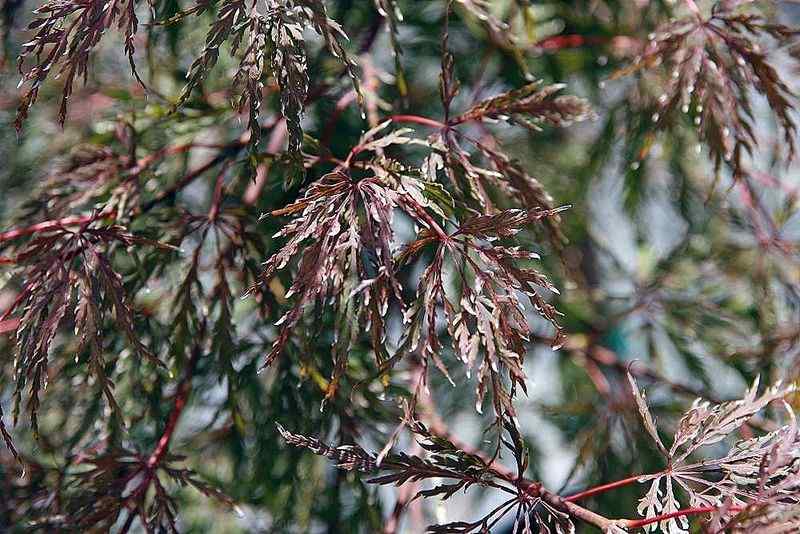
The Tamukeyama Japanese maple (Acer palmatum ‘Tamukeyama’) is a beloved choice for its stunning burgundy foliage and impressive weeping habit. This variety sports delicate, fine-textured leaves that provide a lacey appearance and change from deep purple-red in spring to varying shades of maroon and orange in fall. It typically grows to about 5 to 8 feet tall with a spreading width of about 6 to 10 feet.
Full sun does not deter the Tamukeyama; in fact, its vigor thrives in bright conditions. The layered canopy and gracefully cascading branches create movement and intrigue in any garden space.
Positioning the Tamukeyama within a border or as a specimen in full view allows its unique form to stand out beautifully. In addition, consider planting alongside contrasting green or gold foliage for a stunning visual effect that highlights the Tamukeyama’s vibrant colors.
Waterfall Japanese Maple
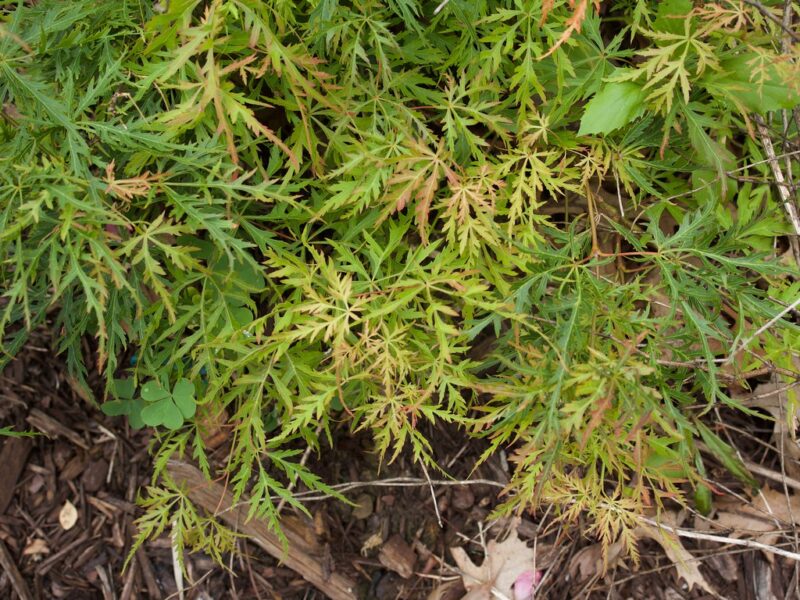
If you’re envisioning a truly cascading effect in your garden, look no further than the Waterfall Japanese maple (Acer palmatum ‘Waterfall’). This unique variety features long, delicate branches adorned with deeply lobed leaves that create a dramatic waterfall effect as they gracefully drape towards the ground. Emerging chartreuse in the spring, the foliage matures to a rich green and adds a stunning vibrancy to the garden.
The Waterfall Japanese maple can grow about 6 to 8 feet in height, with a spread that can reach up to 10 feet, making it suitable for larger gardens or as a statement piece on a slope. It thrives in full sun exposure, but afternoon shade can help preserve its beautiful leaves during the hottest summer days.
To create an eye-catching display, use the Waterfall as a dramatic focal point at the edge of a patio or near a pathway, allowing guests to marvel at its intricate texture and flow. Its unique form can also enhance the sense of space in any garden, making it feel more inviting and tranquil.
Shaina Japanese Maple
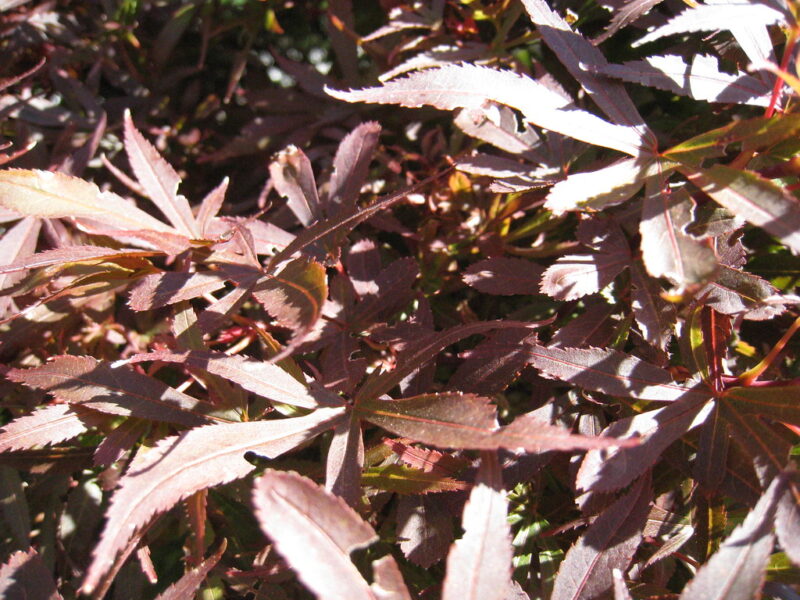
Compact yet striking, the Shaina Japanese maple (Acer palmatum ‘Shaina’) is ideal for smaller spaces or container gardening. This dwarf variety reaches a height of about 3 to 5 feet while spreading approximately 4 to 6 feet wide. Its vibrant red leaves unfurl in spring, deepening to a rich crimson with a radiant glow.
The Shaina is particularly tolerant of full sun and does not require much assistance in terms of care when it comes to watering. For those seeking a low-maintenance tree that produces stunning color year-round, the Shaina offers an attractive solution.
Positioning the Shaina in a decorative container or within well-drained soil can create a charming accent to entryways or courtyards. Its manageable size and vibrant coloration allow for varied arrangements, making it a versatile choice for creative gardeners.
Garnet Japanese Maple
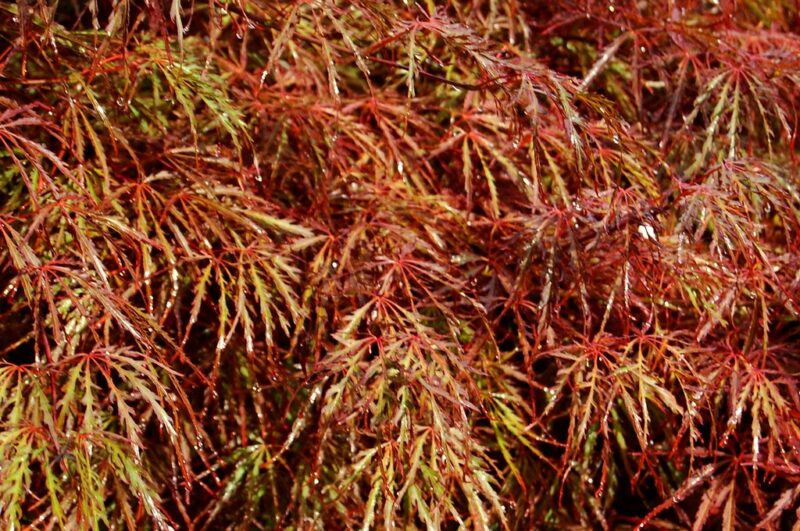
The Garnet Japanese maple (Acer palmatum ‘Garnet’) truly encapsulates the beauty of a traditional maple with its rich color palette and flowing branches. This medium-sized tree features finely textured leaves that emerge maroon or purple in spring and transition to bright reds in fall. It can grow up to 6 to 10 feet tall and 6 to 8 feet wide, making it suitable for a variety of landscape designs.
With its graceful weeping form, the Garnet thrives in full sun, providing stunning coloring that adds warmth and vibrancy to outdoor spaces. The foliage layers beautifully, and its structure is particularly lovely in the softer light of the late afternoon.
Consider placing the Garnet in a location where its elegant form can be appreciated up close. Surround it with lighter-hued plants to allow the unique color and structure of the Garnet Japanese maple to stand out.
Sango Kaku Japanese Maple
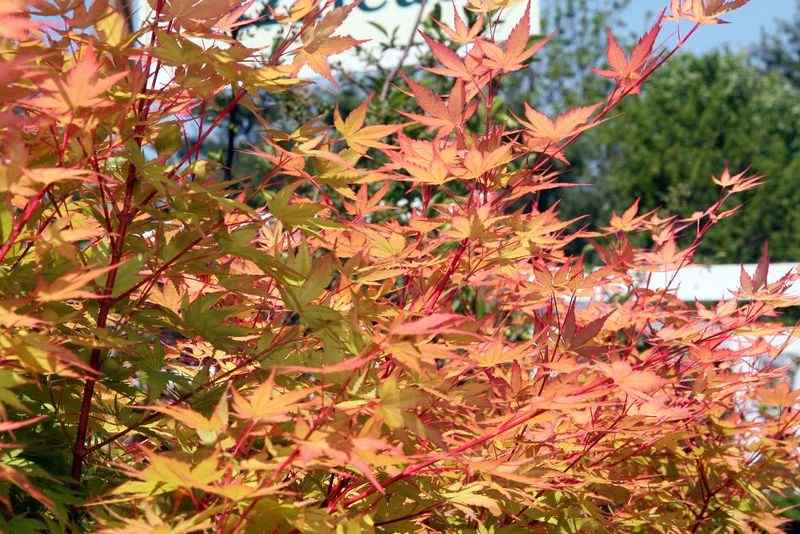
For a truly unique twist, consider the Sango Kaku Japanese maple (Acer palmatum ‘Sango Kaku’), also known as the coral bark maple. This variety not only captivates with its bright green foliage, but it also showcases vibrant coral-colored bark that becomes particularly striking in the winter months when the tree is bare of leaves.
The Sango Kaku typically grows to a height of 20 to 25 feet and can spread up to 15 feet wide, making it an excellent choice for larger spaces. Its form is upright and broadly spreading, providing ample shade during the summer months.
Incorporating the Sango Kaku into a garden design can create a stunning contrast with darker foliage or evergreen plants. Its glowing coral bark adds warmth and draws attention, especially during the colder months when many gardens lack interest.
Fireglow Japanese Maple
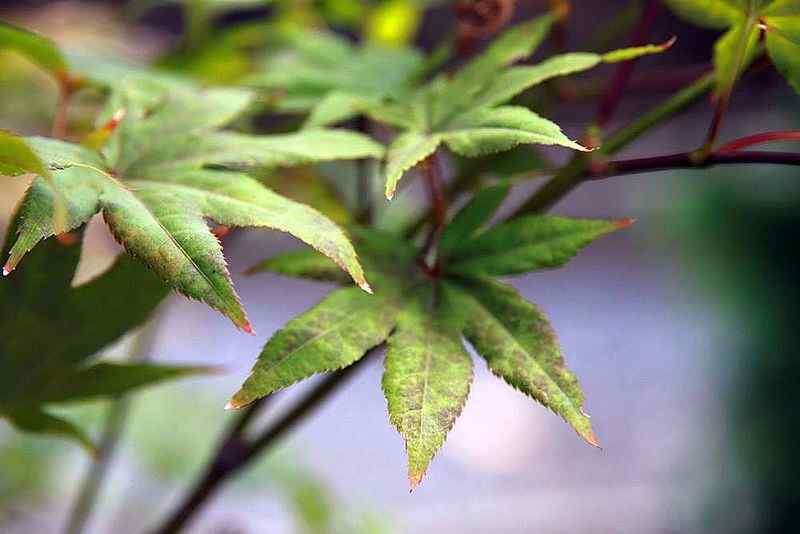
Radiating vibrancy, the Fireglow Japanese maple (Acer palmatum ‘Fireglow’) is a showstopper that certainly lives up to its name. This variety boasts stunning dark red foliage that remains consistently vibrant throughout the growing season. Sprouting upright, the Fireglow matures into a graceful tree that can reach heights of 8 to 10 feet and can spread about 6 to 8 feet wide.
Fully hardy, the Fireglow can withstand full sun without compromising the integrity of its leaves, making it an attractive option for gardeners seeking bold color. This maple is exceptionally adaptable to various soil types, but will thrive in well-drained soil with regular watering.
To maximize its impact, consider planting the Fireglow where it can stand out against contrasting lighter-colored plants or a sturdy backdrop. Its brilliant hues can add a focal point in any setting and ignite interest throughout the seasons as colors shift.
Mikawa Yatsubusa Japanese Maple
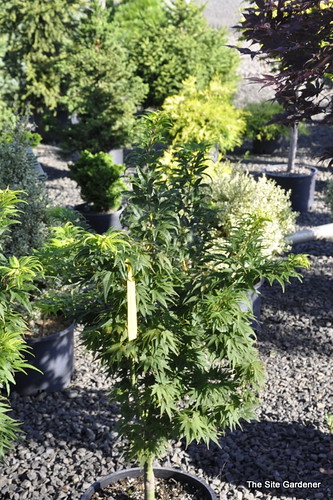
For those drawn to a miniature aesthetic, the Mikawa Yatsubusa Japanese maple (Acer palmatum ‘Mikawa Yatsubusa’) is a delightful addition to any garden. This dwarf variety is known for its dense, compact growth habit, typically reaching heights of only 3 to 4 feet while spreading out to about 4 to 5 feet.
The Mikawa Yatsubusa produces stunning green leaves that create a layered, bushy appearance, providing interest to the garden year-round. Its full sun tolerance is impressive, but it benefits from some afternoon shade, especially in hotter climates.
When planted among other dwarf or low-growing plants, the Mikawa Yatsubusa can provide a unique focal point in smaller spaces. Its harmonious blend of color and texture can complement any garden style, adding personality and warmth.
Seiryu Japanese Maple
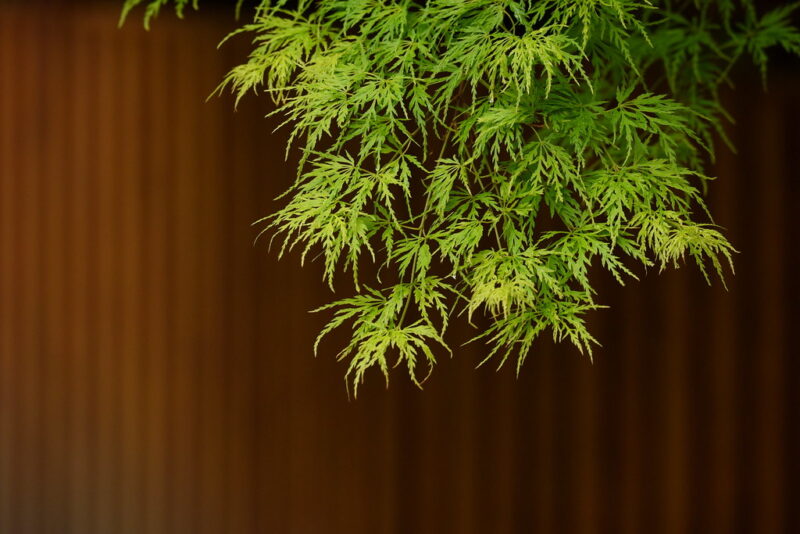
The Seiryu Japanese maple (Acer palmatum ‘Seiryu’) is often praised for its upright growth habit and stunning green foliage. This variety stands out due to its unique, lacy leaves that offer a contrasting look in comparison to the more traditional Japanese maples. Growing to a height of 10 to 15 feet, it can also spread out to about 10 feet wide, making it a versatile choice for various landscape designs.
While the Seiryu thrives in full sun, it also enjoys some partial shade, especially during the hotter summer months. It can serve as a lovely transition between smaller plants and larger trees, providing valuable height and interest in garden spaces.
Incorporating the Seiryu Japanese maple into your landscape can create beautiful architectural contrasts against both contemporary and traditional elements. Its unique leaf shape and structure make it a perfect candidate for adding texture and dimension to garden designs.
Mai Kujaku Japanese Maple
Lastly, we cannot overlook the Mai Kujaku Japanese maple (Acer palmatum ‘Mai Kujaku’), often referred to as the “Dancing Peacock” for its spectacular leaf coloration. This variety exhibits a unique combination of green and cream variegation, creating an eye-catching appearance that’s hard to forget. The Mai Kujaku typically grows to about 8 to 10 feet, with a spread of 6 to 8 feet.
In full sun, the leaf colors become more vibrant, enhancing the visual allure of this unique maple variety. As fall approaches, the leaves take on a brilliant orange hue, offering more seasonal interest.
Using Mai Kujaku near patios or garden pathways can create a stunning focal point that draws attention and admiration. This visually intriguing specimen can also be a lovely complement to more classic plants and structures in your landscape.



